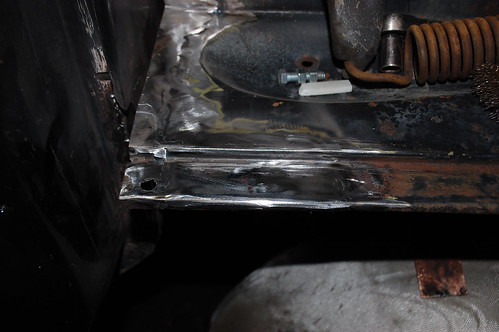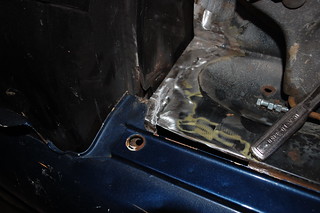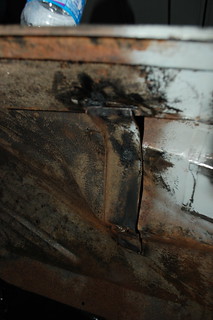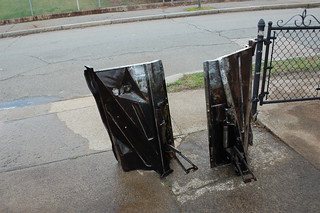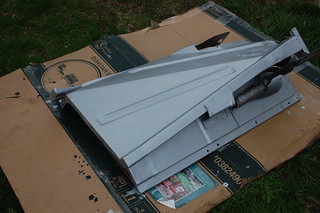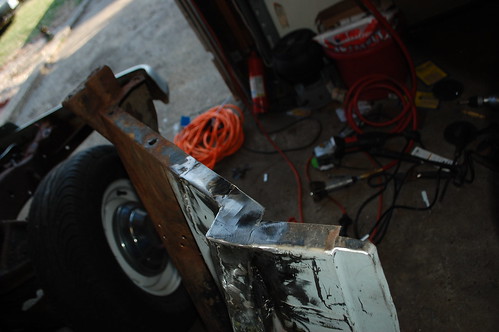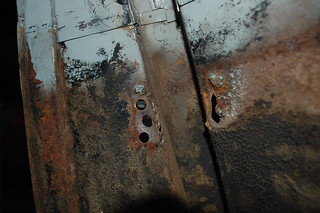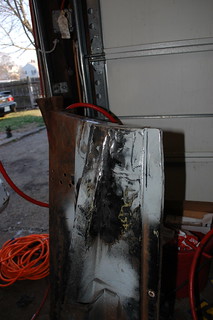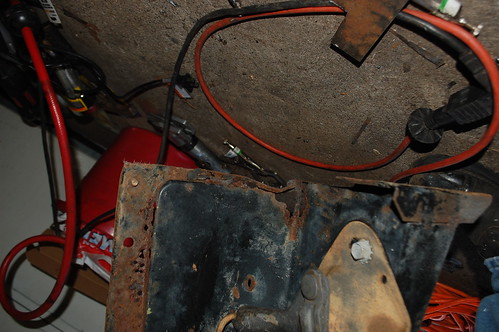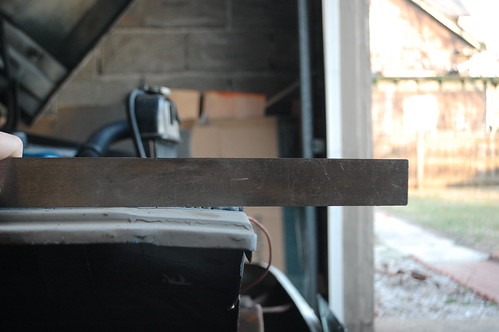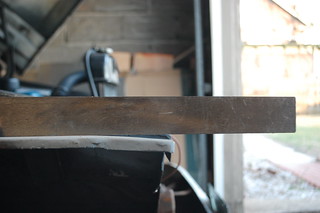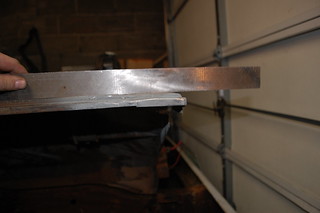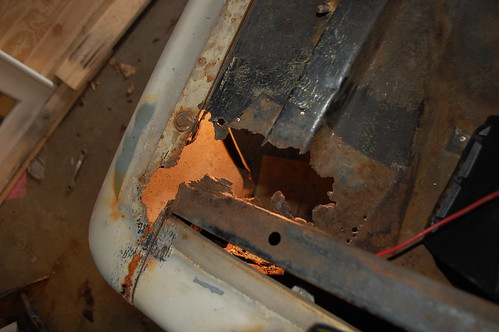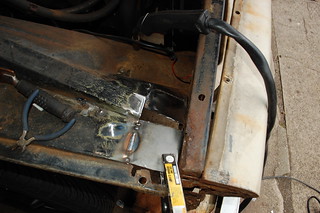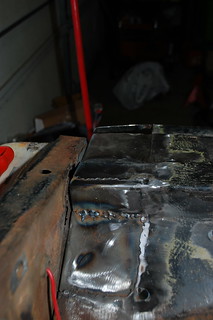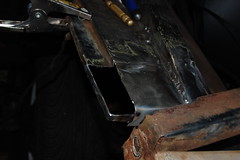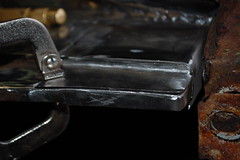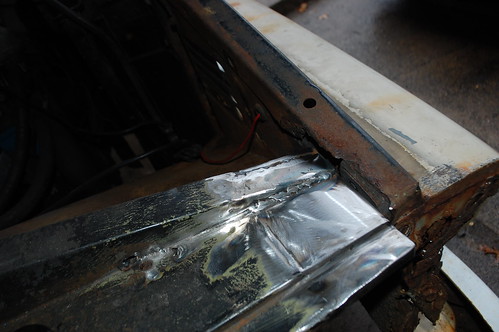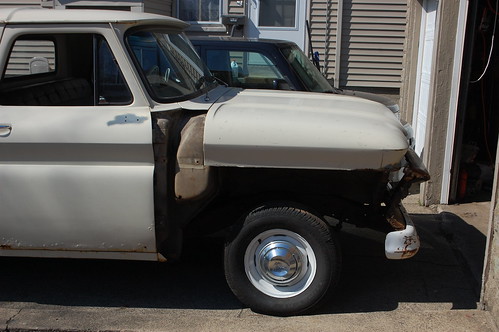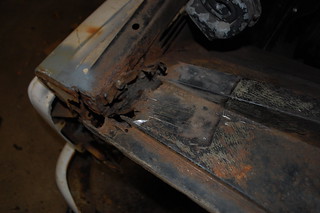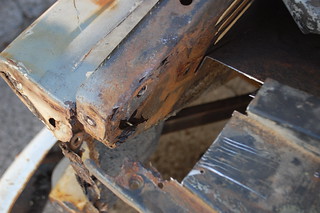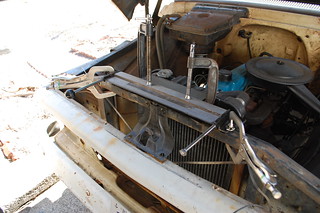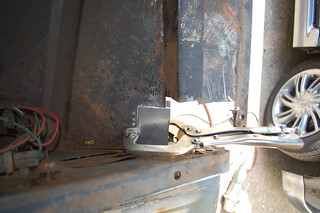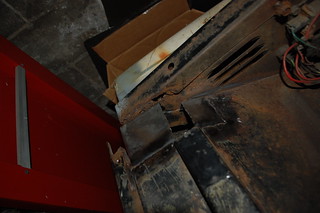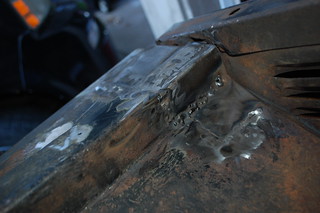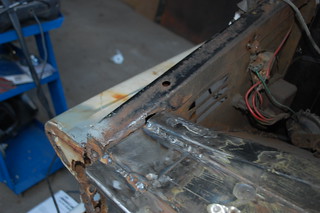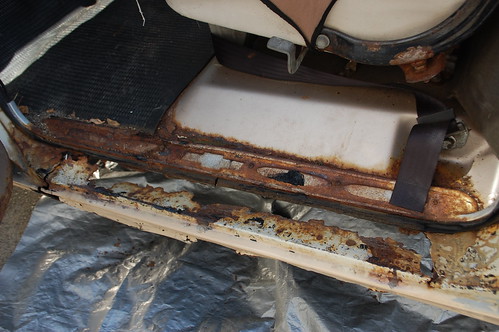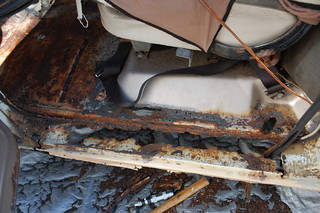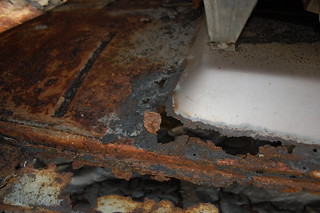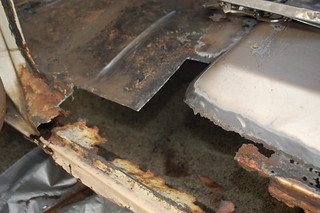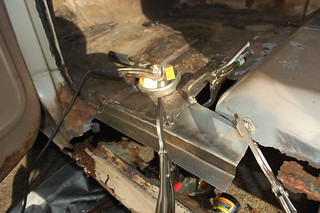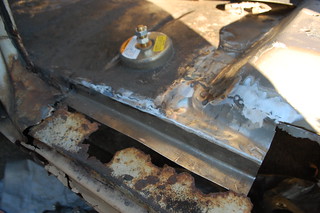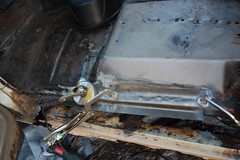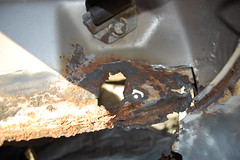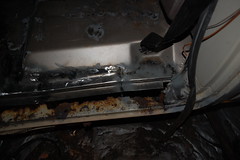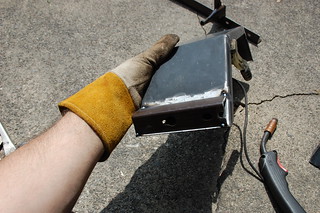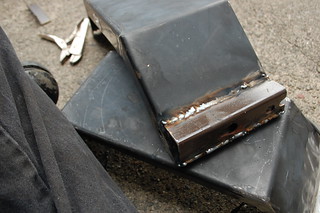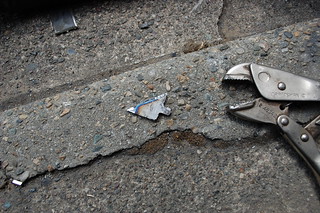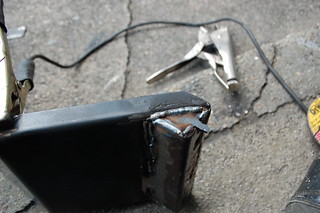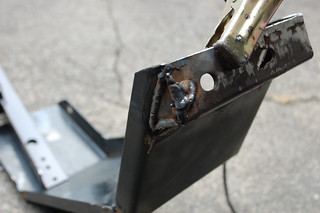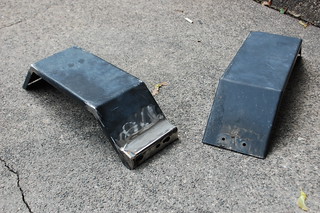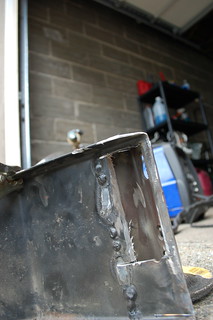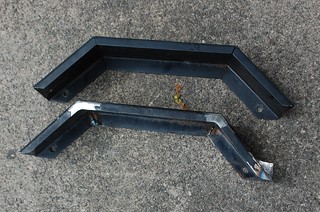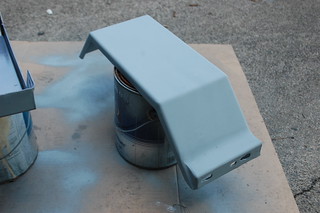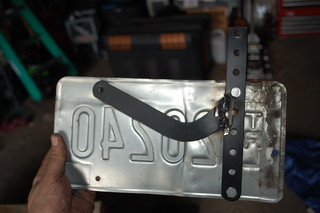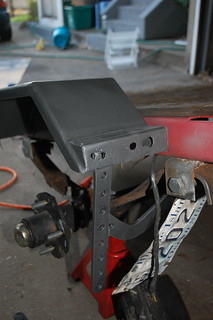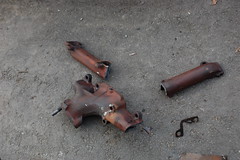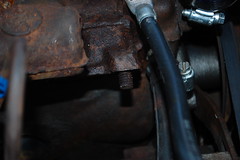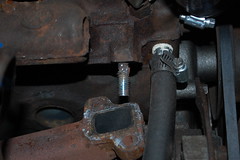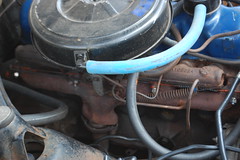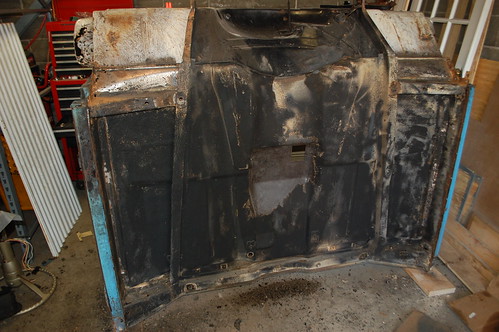 Got the new cab tilted on it’s back, and started digging into the underside.
Got the new cab tilted on it’s back, and started digging into the underside.
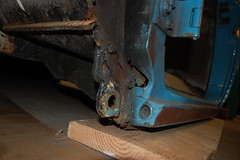 The outer rockers have been replaced already, but whoever did it didn’t actually fix the rust under them, just covered it with new rockers. I knew about this, so I’ll have to cut the new outer rockers off to properly fix the stuff behind them(inner rockers and lower front pillars).
The outer rockers have been replaced already, but whoever did it didn’t actually fix the rust under them, just covered it with new rockers. I knew about this, so I’ll have to cut the new outer rockers off to properly fix the stuff behind them(inner rockers and lower front pillars).
Also found rust in all four cab braces, floors in front outer corners, cowl vents, & cowl panels below vents.
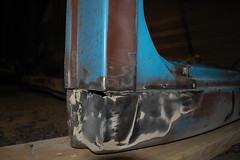 Annoyingly, I found out the cab corners *were* replaced, but done very badly and covered with bondo. Those are coming out too, to be done right
Annoyingly, I found out the cab corners *were* replaced, but done very badly and covered with bondo. Those are coming out too, to be done right
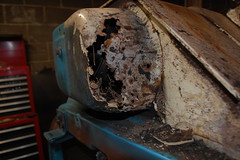 As bad as this all looks, It is still better than my other cab. I have everything to fix it except 1 cab brace & the lower front pillars. I’m going to form the patches for the cowl vents as those are invisible under the fenders.
As bad as this all looks, It is still better than my other cab. I have everything to fix it except 1 cab brace & the lower front pillars. I’m going to form the patches for the cowl vents as those are invisible under the fenders.
I’ve decided that the cab is a low priority, I’m going to get all the rust *on* the truck delt with, then swap the cab over. However I wanted to mess with the cab a bit, so I decided to knock something easy out first.
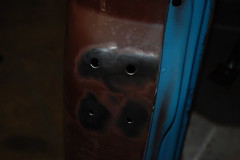 This cab was from a deluxe trim truck (like the other ’64 I had), so I need to weld up the 4 sail panel screw holes, and the 4 larger side trim holes. I may put the side trim on this truck later, but if I do I’m going to used double sided trim tape.
This cab was from a deluxe trim truck (like the other ’64 I had), so I need to weld up the 4 sail panel screw holes, and the 4 larger side trim holes. I may put the side trim on this truck later, but if I do I’m going to used double sided trim tape.
For the small sail trim holes I just removed the paint and filled the holes with the welder & ground them smooth.
For the bigger trim holes I’m making small circular filler pieces and welding those in. A skim coat of filler and these should be perfect.

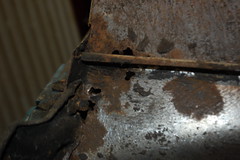
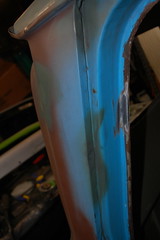
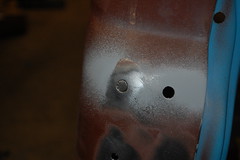
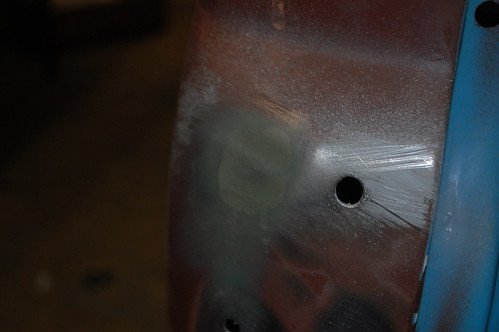
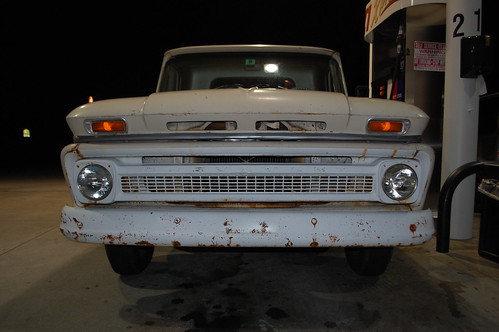
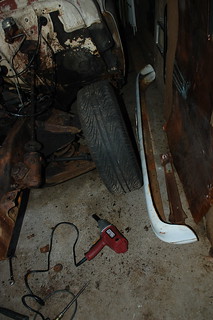
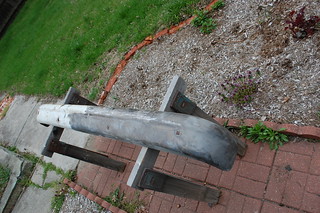 So once the bumper was off, I stripped it of several layers of white paint, and ground down all the surface rust. I was pleasantly surprised to discover it doesn’t appear to be bent, and doesn’t have an dents in it.
So once the bumper was off, I stripped it of several layers of white paint, and ground down all the surface rust. I was pleasantly surprised to discover it doesn’t appear to be bent, and doesn’t have an dents in it.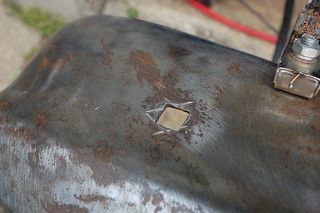 Before I could start the repainting, I had to address the gouge I’d made with the cutting wheel when I cut the various bolts off.
Before I could start the repainting, I had to address the gouge I’d made with the cutting wheel when I cut the various bolts off.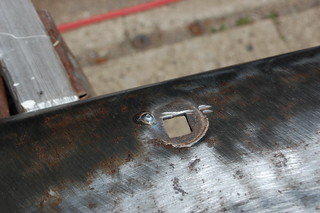
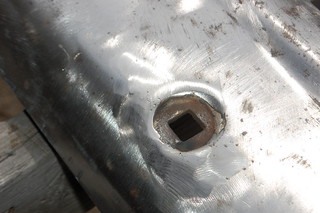
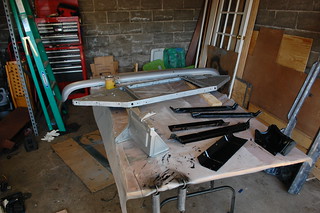 Once that was done the bumper was coated in MasterSeries & primer like all the other parts.
Once that was done the bumper was coated in MasterSeries & primer like all the other parts.
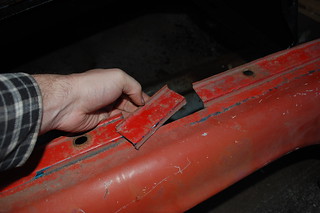 But first I needed to patch the other section that you can see cut out above. There is 3 bends here that needs to be carefully made so everything lines up. I got a brain wave and measured the lip at the top of a junk fender I had. Everything appeared to match so I cut out a section.
But first I needed to patch the other section that you can see cut out above. There is 3 bends here that needs to be carefully made so everything lines up. I got a brain wave and measured the lip at the top of a junk fender I had. Everything appeared to match so I cut out a section. 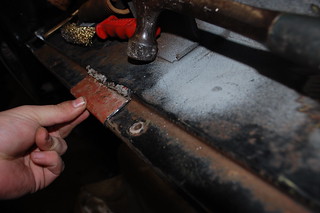 I flipped the piece over and tested it, the bends are an exact match. I carefully trimmed it and the fender edge to fit and tacked it into place.
I flipped the piece over and tested it, the bends are an exact match. I carefully trimmed it and the fender edge to fit and tacked it into place. 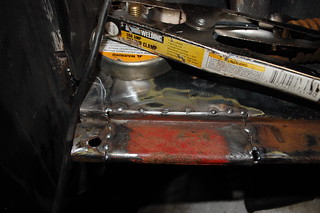 Here it is tacked in place, please ignore the terrible welds from forgetting to turn on the shielding gas on the MIG. Below is the piece with the welding finished & ground down.
Here it is tacked in place, please ignore the terrible welds from forgetting to turn on the shielding gas on the MIG. Below is the piece with the welding finished & ground down. 